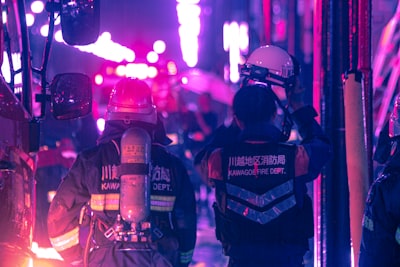Definition and Overview
An ambush attack on first responders refers to a premeditated assault in which emergency personnel—such as firefighters, paramedics, or law enforcement officers—are deliberately targeted while responding to a call for service. These attacks, typically executed with the intent to harm or kill, often involve luring first responders to a specific location under false pretenses or creating hazardous conditions to exploit their vulnerability upon arrival.
Historical Context
While violence against first responders has occurred throughout history, ambush attacks have received increased attention in the 21st century, particularly in the United States. Such attacks often coincide with broader national discussions about public safety, firearm access, and mental health. High-profile incidents have occurred during responses to fires, medical emergencies, or crimes, sometimes resulting in multiple casualties and heightened community concern.
Motivations and Tactics
Perpetrators of ambush attacks may be driven by a variety of motives, including personal grievances, ideological beliefs, mental health crises, or a deliberate desire to target representatives of public authority. Tactics can include starting fires, making false emergency calls, or exploiting existing emergencies to create chaotic, high-risk environments.
Impact on First Response Services
Ambush attacks have profound effects on emergency service operations:
- Increased Risk: Responders face heightened dangers, necessitating additional safety protocols.
- Operational Changes: Agencies may modify dispatch, response protocols, training, and coordination with law enforcement.
- Psychological Impact: Survivors and their colleagues may experience trauma, leading to long-term psychological effects and changes in workforce morale.
- Public Trust and Policy: Such incidents can influence public perception, policy decisions regarding responder safety, and legislative action related to firearms or emergency service protocols.
Prevention and Response Strategies
To mitigate risks, first responder agencies employ a variety of strategies:
- Situational Awareness: Emphasizing vigilance and threat recognition during calls.
- Inter-Agency Coordination: Enhanced communication between fire, medical, and law enforcement services.
- Tactical Equipment: Availability of protective gear and specialized vehicles for high-risk situations.
- Community Engagement: Public awareness campaigns to discourage hostile actions against responders and encourage reporting of suspicious activities.
Legal and Ethical Considerations
Attacks on first responders are prosecutable under specialized statutes in many jurisdictions, reflecting the grave societal impact of such crimes. Laws may impose enhanced penalties for assaults on emergency personnel.
Notable Incidents
Significant ambushes, such as the 2016 Dallas police shooting and targeted attacks on fire and medical teams, have resulted in greater resources devoted to research, training, and policy reform. Agencies regularly adapt lessons learned from such incidents to enhance resilience and readiness.
Conclusion
Ambush attacks on first responders present complex challenges that impact operational planning, responder welfare, and public safety. Continued attention to prevention, training, and targeted policy measures is considered essential to safeguarding these vital public servants.

Comments
No comments yet. Be the first to comment!